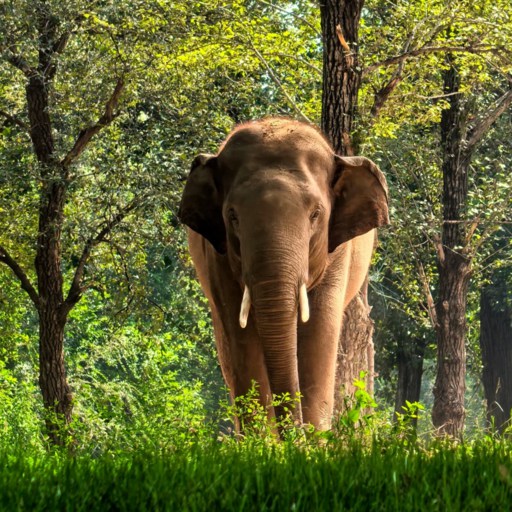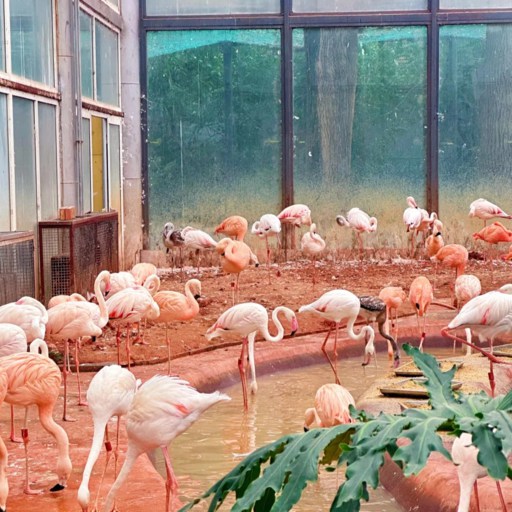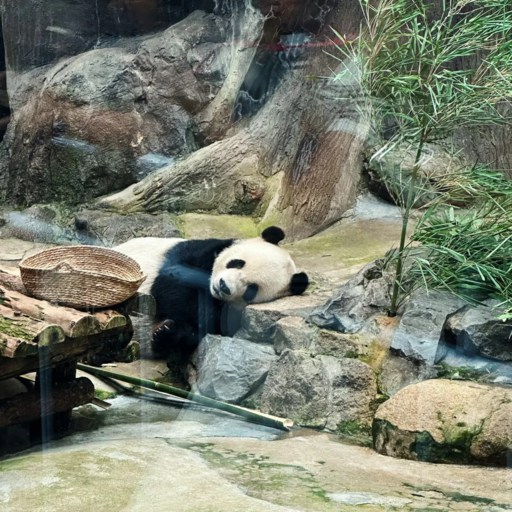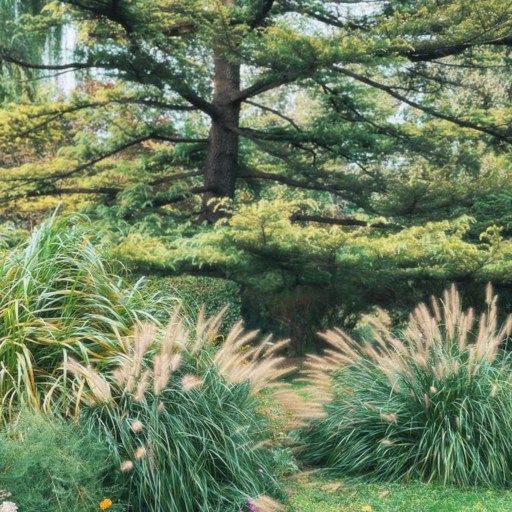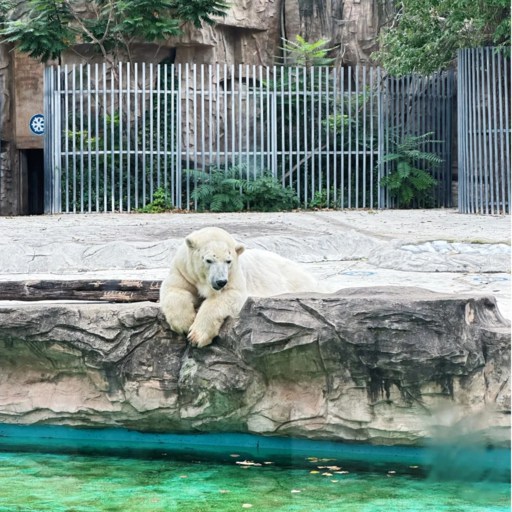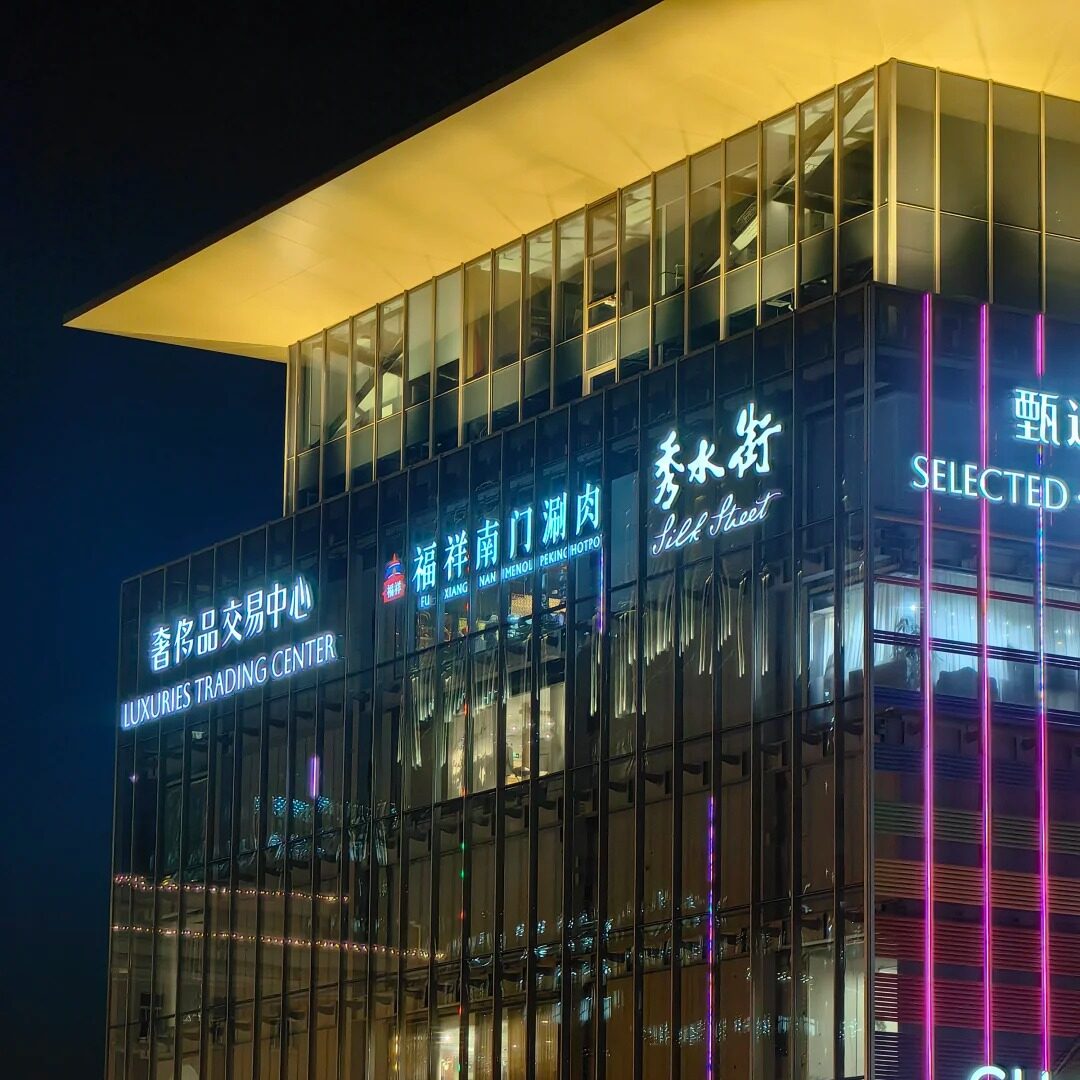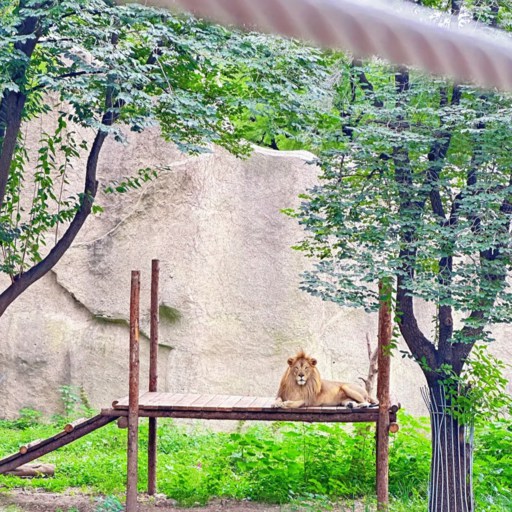
Beijing Zoo
Entering Beijing Zoo can be compared to opening a storybook in which pages are full of life and sound. The aroma of bamboo comes out of the Panda House and blends with the slightly earthy scent of damp land around the lakes, and children scream as flamingos walk on the surface of the shallow water. There is a seller somewhere in the vicinity who sells sugar-coated sunflower seeds, and a crowd of school children passes by, their chattering like a pinball off the aged brick surface on the North Gate.
I was not certain that I was going to like this place initially. Crowds? Maybe. However, the call of lions, the foot stamping of the giraffe circle, and the sight of the pandas lying listlessly under morning sun caused me to stay longer than I originally intended. When I was leaving, I understood that it would be a mistake that would have no cure and everyone would regret not going to Beijing Zoo.
Quick Facts about Beijing Zoo
| 🐼 Highlight | Panda House — home to around 10 giant pandas, plus Beijing Aquarium and Bird Lake |
| 🕒 Opening Hours | 8:30 AM – 5:00 PM (tickets last sold ~4:30 PM), closed on select holidays |
| 🎟️ Tickets | Main zoo ¥20–30; Panda House combo ¥40–50; children and seniors slightly cheaper |
| 🛣️ How to Get There | Subway Line 4 to Dongwuyuan Station (Zoo Station), Exit C; buses 323, 331, or taxis |
| 🕰️ Best Visiting Time | Early morning 8:30–10:30 for pandas; spring and autumn for milder weather |
Highlights of Beijing Zoo
- Elephant in Beijing Zoo
- Flamingo in Beijing Zoo
The Panda House – China’s National Treasure
The Panda House Beijing is its main event, housing about 10 giant pandas. They are most active in the early morning, particularly during feeding time. Not only are you able to watch them play, eat bamboo or nap in their shrouded enclosures. With its circular design and encircling bamboo groves, the pavilion is one of the zoo’s most photogenic nooks.
Insider Tip: For the best odds of catching pandas awake and active, come between 8:30 AM and 10:30 AM.
Bird Zone — A Colorful Sanctuary for Bird Enthusiasts
For finch lovers, the Bird Zone is awesome. It has flamingos, cranes, peacocks and tropical parrots in attractive ponds & aviaries. The walks are shaded by lotus blossoms, stone walkways and bridges and very peaceful settings.
Don’t miss: The large, walk-through aviary, where you can get incredibly close to birds on the wing — a paradise for photographers.
Monkey Hill & Big Cat Habitats
Monkey Hill This is also a great place to observe playful macaques and golden monkeys as they bound among trees and rocks in full view of families with children. Adjacent to the Tiger and Lion House are large paddocks for big cats such as Siberian tigers and African lions, that aim to recreate their natural environments. Both educational and exciting - especially at feeding times.
Fun fact: The Tiger House is one of the zoo’s oldest buildings, from the beginning of the 20th century.
Beijing Aquarium – Ocean Wonders in the City
Situated inside the zoo, Beijing Aquarium is one of Asia’s largest inland aquariums. It presents marine life from across the globe — coral reef fish, beluga whales and playful dolphins. Daily dolphin and sea lion shows, along with interactive marine science displays are fun for the whole family.
Tip: The aquarium is a separate combo ticket, so time and budget accordingly.
Gardens, Pagodas, and Scenic Corners
Apart from the animals, Beijing Zoo’s grounds epitomise the loveliness of traditional Chinese gardens. Willow-shaded ponds, lotus pools, small pagodas and charming stone bridges offer tranquil places to take photos or simply relax. Near Bird Lake, you will also find tranquil pavilions for when the noise of the crowd gets to be too much.
Photography Tip: The late afternoon light washes the ponds and pagodas in a pleasant glow — the perfect backdrop for wide shots.
What Makes Beijing Zoo Worth Your Time
If you visit Beijing Zoo, you’ll find it is much more than cages; it acts as a green city sanctuary blending wildlife, culture, and landscape. The Panda House Beijing anchors the zoo, housing several giant pandas. They nap midday but are often active in the early morning, playing or eating bamboo. Beyond the pandas, over 500 species roam the zoo, from exotic cranes and flamingos in the bird area to predators like tigers and snow leopards.
The Beijing Aquarium, one of Asia’s largest inland aquariums, features dolphin and sea lion shows. Serpentine paths, willow-shaded lotus pools, and classical garden remnants make the zoo both lush and educational. Traveling with kids, loving animals, or needing a break from Beijing’s concrete jungle? This blend of Chinese nature, culture, and wonder offers an enriching experience.
Planning Your Route Inside Beijing Zoo
- Penguin in Beijing Zoo
- Panda in Beijing Zoo
A visit to Beijing Zoo can take a full day if you aim to see everything, but careful planning maximizes your time. Even with just two hours or half a day, a strategic route helps cover the zoo efficiently. Spanning over 90 hectares, knowing the Beijing Zoo map on Trip.com reduces backtracking and ensures you see as many animals and gardens as possible. Using insider tips lets you avoid crowds and capture the most Instagrammable shots throughout your visit.
Suggested 2-Hour Quick Visit
If you’re pressed for time, begin in the early morning when the animals are out and about. Enter through the South Gate near Xizhimen and walk straight to the Panda House, the zoo’s main attraction. Spend about 30 minutes there, as mornings are when pandas are most active and likely to eat. Next, visit Monkey Hill and the Tiger and Lion House, then pass the Bird Zone for quick photos of colorful parrots and flamboyant flamingos. End your short tour near the Beijing Aquarium, which has a striking wave-like exterior even if you don’t go inside.
Best for: People who are short on time, families with kids or those looking to pair a visit to the zoo with nearby Beijing attractions like the Beijing Planetarium.
Half-Day Deep Exploration
Get even farther from the gate (if you have about 4 hours to spare) The South Gate gets a lot of action, but so do all the other gates — if at a more leisurely place. Start with the Panda House and Asian Animals Area before walking toward African Savanna, where giraffes, zebras and rhinos wander in open areas. Head next to the Reptile House for snakes, crocodiles and turtles — a fun visit for children. Take a lunch break around noon at one of the shaded picnic areas or small cafés along the lake. Afterward, visit the Beijing Aquarium — with its underwater tunnel and dolphin show, you can spend about an hour. End your visit at the Amphibian Pavilion and Rare Animal Zone for red pandas and golden monkeys.
Tip: Download an online map of Beijing Zoo or follow the official English and Chinese signboards — they’re reliable and simple to navigate.
Avoiding Crowds and Peak Times
Weekends and holidays can get crowded, particularly by the Panda House and Aquarium. Try to come earlier than 9am or after 3:30pm when tour groups have already left. More importantly, bathrooms in the Panda House part of the park can be overcrowded. Feeding animals is not permitted — the staff are strict about this, remind little ones not to toss food into enclosures.
Scenic Photo Spots and Hidden Corners
Apart from the animals, Beijing Zoo is one of the prettiest green spaces in Beijing. Don’t overlook the lotus pond located near the Elephant House, especially in summer. The statuary beside the whitewashed stone bridge near the Reptile House offers a classic garden view with pagodas across the water. For a quieter corner, walk down the small path behind the Bird Zone. You’ll find willow trees and koi ponds there, perfect for calm photos and a short rest.
Whether you spend two hours or half a day, having your own plan helps you see the best of Beijing Zoo — from playful pandas to peaceful gardens — without feeling rushed or overwhelmed.
Tips and Practical Advice for Visiting Beijing Zoo
- Plants in Beijing Zoo
- Polar bear in Beijing zoo
A visit to Beijing Zoo can be enjoyable, educational and even remarkably peaceful — but not by accident. From ticketing confusion and seasonal crowds to unpredictable weather, first-time visitors often encounter small obstacles that can be easily hurdled with a few savvy strategies. Here is how to make your visit easy, from purchasing Beijing Zoo tickets to discovering when the best time is to see pandas at the Panda House Beijing.
Tickets, Entry and Online Purchase Tips
Beijing Zoo tickets are sold at the front gate, but lines can be long, especially on weekends. Booking online via WeChat is the better bet:
- Look up “北京动物园门票” in WeChat’s mini-program section.
- Select your date and ticket type — regular admission or combo ticket (which includes the Beijing Aquarium).
- Pay via WeChat Pay (check out with WeChat), then scan the QR code at the gate for quick entry.
Admission RMB15-20 for the zoo alone; combo tickets with the Aquarium run ¥120-150. Beijing Zoo open hours are generally 7:30 – 17:00 (last entry is at around 16:00), while the Aquarium and Panda House may also have its special visiting time.
Pro Tip: Bring a passport or form of identification when redeeming your online tickets — staff may cross check the details on your booking at the gate.
Food, Facilities, and Family-Friendly Tips
There are small snack bars and drink kiosks throughout the zoo, but food options can be basic. Families can bring their own light lunches, hover around picnic hot spots located near the lake. Do not feed the animals — it’s forbidden and zookeepers watch for it. If you want to make sure your visit respects local customs and park etiquette, learn more about Chinese cultural norms.
And if you visit with young kids, strollers are permitted and available to rent at the entrance. Restrooms are abundant but sometimes crowded near the Panda House and main plazas, so time your breaks before you head off for a long walk. Next to the Bird Zone is a children’s playground, and near the exit there’s a souvenir shop where kids can grab panda-themed toys.
Seasonal Advice and Weather Considerations
The best time to visitBeijing Zoo is in spring (April-June) or autumn (September-October), when temperatures are comfortable and the trees are green. Summer is hot and sticky, so we suggest sun up start times. Bring sunscreen, hats and water bottles — there are refill stations at most rest areas.
In the winter, some animals will stay inside, but you can expect far less noise and mess at the zoo and great chances to see pandas at their most homey roosts indoors. Just bundle up a bit (you can always check to see if some of the exhibits — like the Reptile House — are temporarily closed for maintenance).
Crowds and Timing Insights
The most crowded sites are the Panda House Beijing and the Beijing Aquarium, which draw large tour groups. To escape the crowds, try to get there before 9:00 AM or after 3:30 PM. Mondays are usually quieter than weekends, so you’ll find fewer crowds. However, do remember that the Aquarium sometimes closes on Mondays for maintenance.
Avoid Chinese public holidays like Golden Week in early October or Labor Day from May 1–3, since lines and walkways get packed fast. If you must visit then, try entering through the North Gate or East Gate instead. Both are much calmer than the busy South Gate near Xizhimen, which often fills up early in the day.
With a bit of planning — buy your Beijing Zoo tickets in advance, check the opening hours, and decide where to rest or eat — your day will flow easily. Whether you come for the pandas or just to unwind in one of Beijing’s oldest parks, these small but practical tips help you enjoy every minute.
Nearby Attractions and Extended Visit Ideas
If you want to visit Beijing Zoo, you will soon discover that its surrounding vicinity has a lot more to offer – from underwater marvels and royal gardens. Whether you have a few extra hours or a full day to spend, here are some close and easy-to-enjoy side stops that pair well with your zoo visit.
Beijing Aquarium
We find the Beijing Aquarium to be great value and a MUST DO for families and animal enthusiasts! It’s renowned for its dolphin and sea lion show, a colorful coral reef, tunnels where you walk under tanks filled with the species that call San Diego Bay home and interact with them in touch pools. You can also buy a combo ticket for the zoo and aquarium if you are in a rush (and want to save money) (approximately ¥120–150 combined).
Tip: The entrance to the aquarium is near the northwest corner of the zoo. Budget at least 1.5-2 hours if you want to attend the entire marine show schedule.
Bird Lake and Surrounding Areas
For a peaceful break after seeing the pandas, head to Bird Lake, one of the prettiest spots in Beijing Zoo. Flocks of flamingos, cranes, and swans glide among willows and lotus ponds, creating some of the zoo’s most photogenic scenes. Nearby, shaded pathways, peaceful pavilions, and small bridges invite you to relax, take pictures, or enjoy a light snack.
Many locals stroll here in the late afternoon, offering a calm glimpse of everyday Beijing beyond its famous monuments.
Search terms applied: things to do near Beijing Zoo, visit Beijing Zoo
One-Day Extended Itinerary Suggestions
With more time, you can easily make your zoo visit a full day excursion into culture. The Summer Palace (颐和园) — a Unesco World Heritage site with imperial gardens and lakes — is just a 20-minute taxi ride or subway journey from the zoo’s East Gate. Or, walk, or go for a short ride to Beijing Planetarium right next to the zoo, both are fun educational stops before lunch.
Bonus Idea: If you have kids with you, end your day with dinner at the nearby Xizhimen commercial area, which is packed with family-friendly restaurants and cafés.
FAQs About Beijing Zoo
Q: How long do you need at the Beijing Zoo?
The average visitor taks 2-4 hours touring Beijing Zoo, depending on level of interest and speed. A 2-hour fast tour takes in the Panda House Beijing, tigers and Bird Lake, while a half-day includes time at the Beijing Aquarium and for relaxed strolls in the gardens. Get there early to enjoy the cooler and more peaceful setting before the masses show up.
Q: How much does it cost to go to the Beijing Zoo?
Regular Beijing Zoo tickets are priced at approximately ¥15–20 per person, and combo tickets with the Beijing Aquarium cost ¥120–150. Children less than 1.2 meters and elderly above 60-years may also get a discount or free access on presentation of valid ID. The means of payment are cash, card or mobile apps such as WeChat Pay. Make sure you always compare ticket prices on the official site for accuracy.
Q: How many pandas are in the Beijing Zoo?
Panda House Beijing typically has 8–10 pandas, but the number varies with breeding programs and temporary transfers. You’ll see both adult and juvenile pandas in both outdoor and indoor enclosures. Morning is also the best time to see them eat bamboo or play before they settle down for a nap after breakfast.
Q: Is Beijing Zoo open on Mondays?
Yes, Beijing Zoo is open every day, even on Mondays. But some parts such as the Beijing Aquarium or certain indoor halls while be temporarily closed for cleaning or maintenance on selective Mondays. It’s a good idea to check the Beijing Zoo opening hours on its official site or WeChat mini program in order to plan your visit.
Q: Can foreigners buy Beijing Zoo tickets online?
Yes! Beijing Zoo WeChat Mini-Program is feasible for the foreign guests but passport number shall be provided, not Chinese ID. We accept payment in WeChat Pay or Alipay International. Or you can purchase tickets at self-service kiosks (by cash or by card) at the station. Online booking means you can avoid long lines, especially on a popular weekend night.
Q: Which is the closest subway station to Beijing Zoo?
The nearest subway station is Dongwuyuan Station (动物园站) on Line 4, where you can take Exit C to get off at the South Gate of Beijing Zoo. It is also accessible on Line 2 or Line 13 with a quick transfer at Xizhimen Station. Taxi or Didi rides are more convenient, especially with kids or during rush hours.
Q: Which is the biggest zoo in China?
Beijing Zoo is one of China's oldest and largest zoos, but Guangzhou's Chimelong Safari Park has the distinction of being China's biggest zoo. Yet, Beijing Zoo is special for its lengthy history and animal kingdom, as well as the research findings, especially in terms of panda preservation and public knowledge.
Q: Is Beijing Zoo suitable for kids and seniors?
Absolutely. Beijing Zoo has plenty of benches and large, stroller-friendly pathways. Families will adore the Children’s Playground and panda enclosures, seniors can contemplate Bird Lake in quiet garden areas. Just plot in rest stops and pack snacks, water and sun protection in warm months.
Q: Are there English signs in Beijing Zoo?
Yes, you can find English translations on most exhibits and sign boards in Beijing Zoo. Especially those popular zones like Panda House and Beijing Aquarium. That said, smaller areas might still have Chinese-only signs, so having a Beijing Zoo map or using translation apps like Google Translate can be useful to help you get around.
